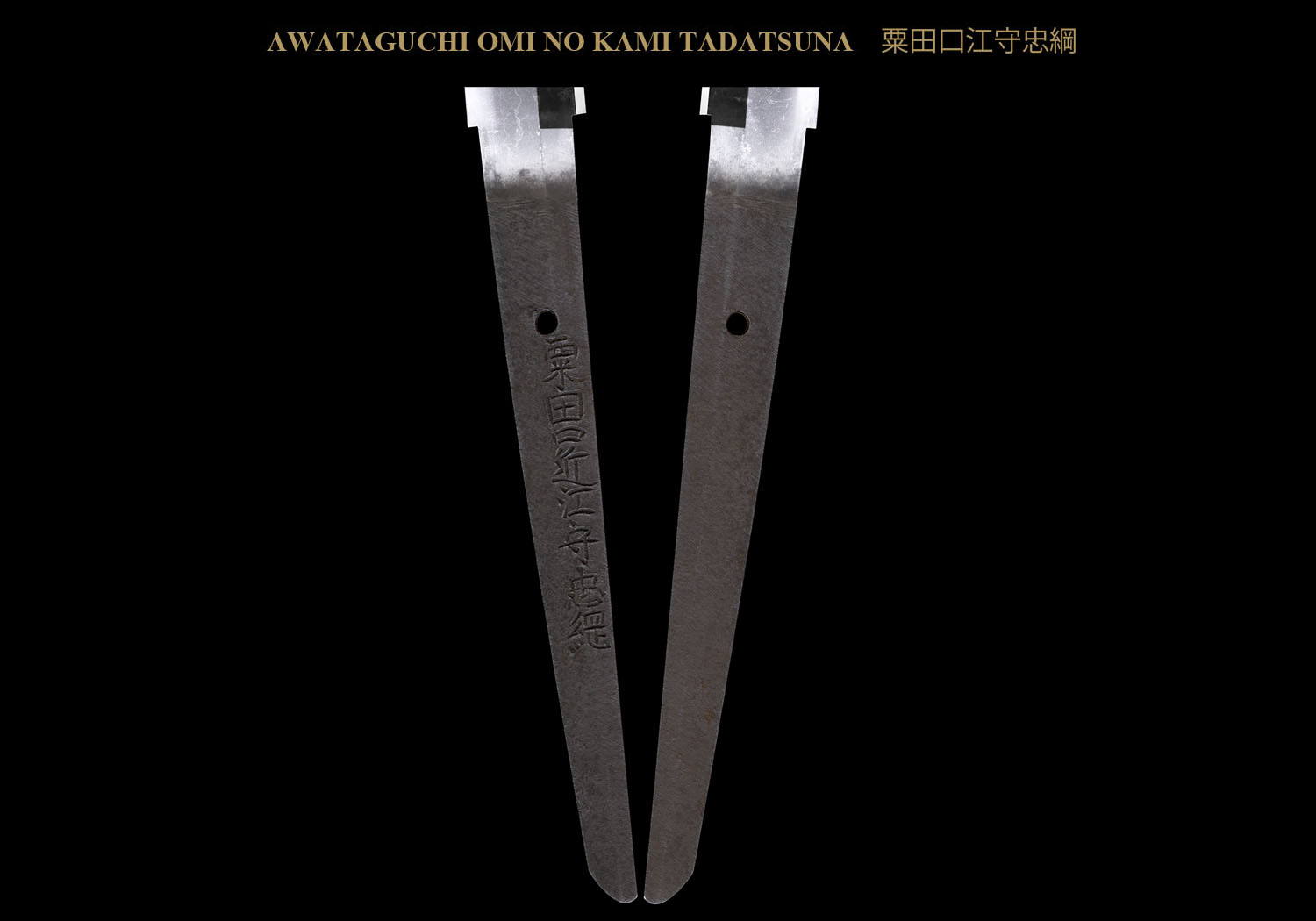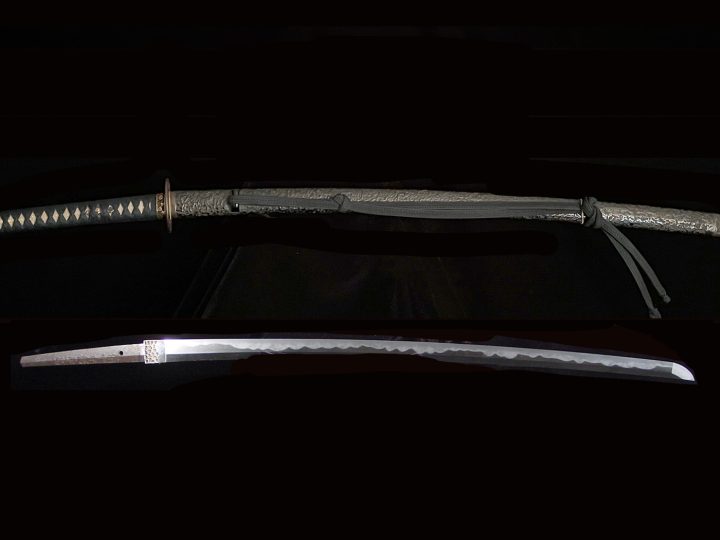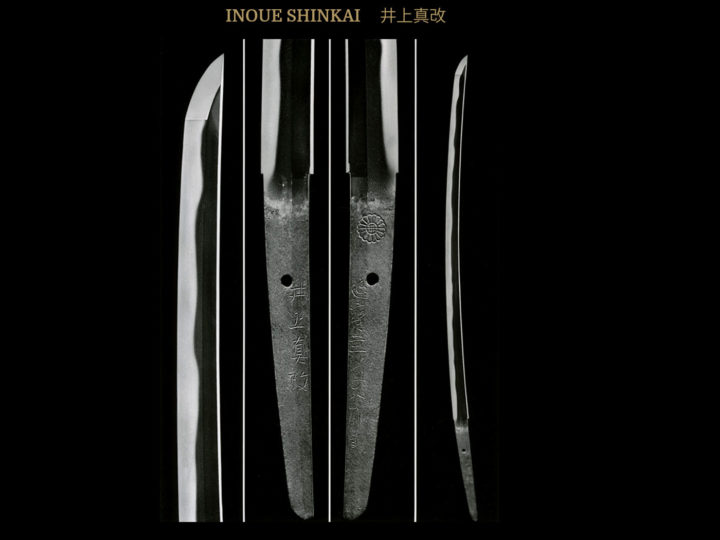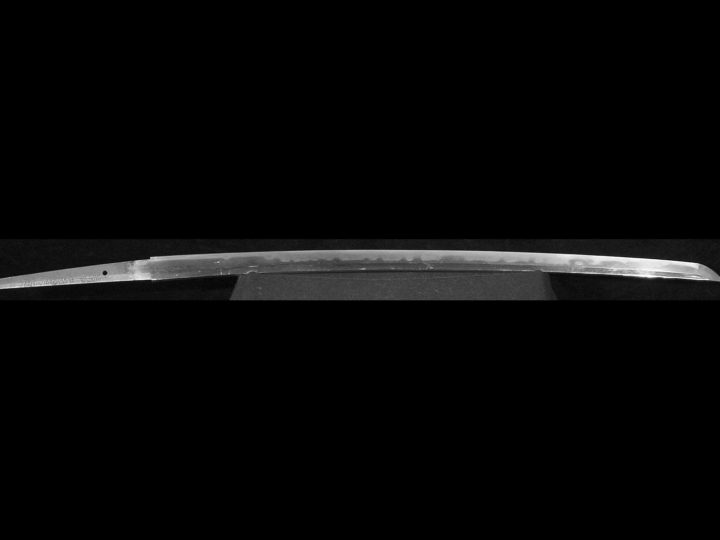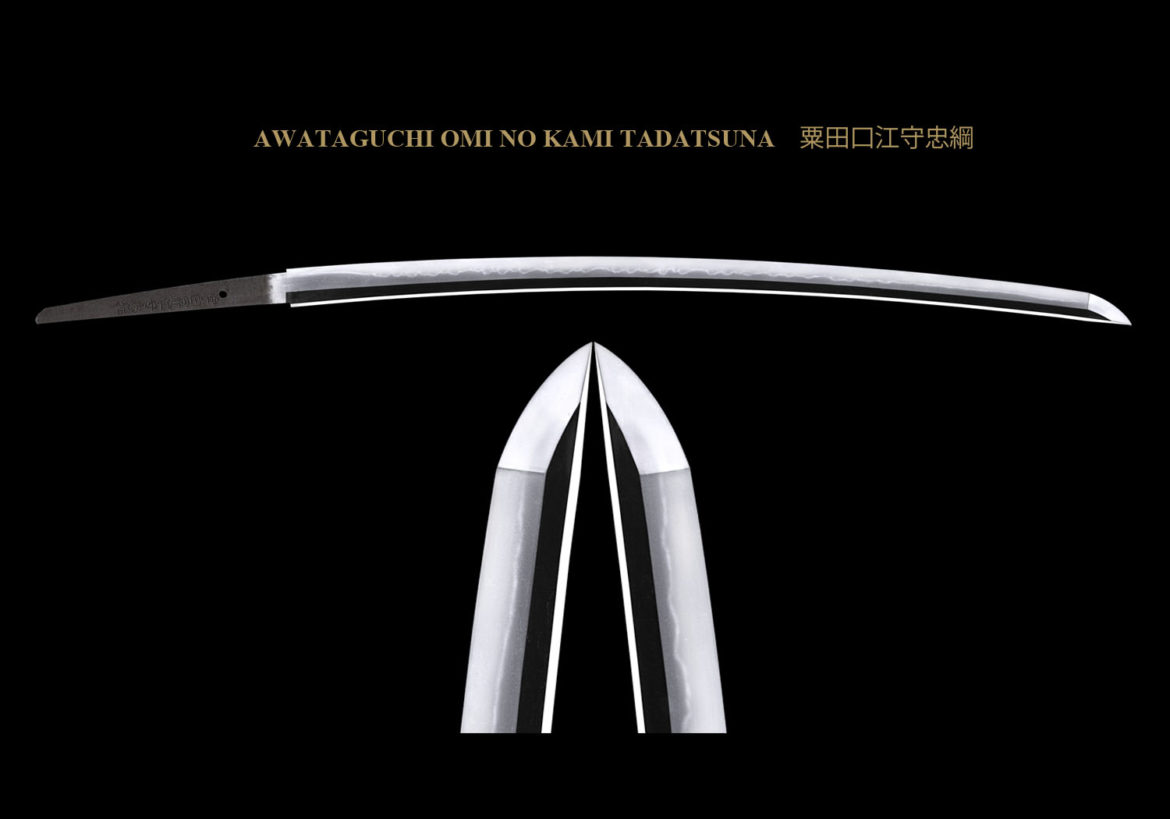
Asai Omi no Kami Tadatsuna (浅井近江守忠綱) moved from Himeji in Harima province to Osaka around 1648. He then became one of the prominent smiths of what we call the Osaka Shinto tradition. He professed to be a descendant of Awataguchi Kunitsuna (粟田口國綱), but this has not been proven. He taught many disciples, the foremost of which was his son the nidai Tadatsuna (忠綱) who many feel surpassed his father in skill. The first generation Tadatsuna (忠綱) is sometimes called Oya Tadatsuna (親忠綱) as a way to differentiate him from the nidai who is called Ikkanshi Tadatsuna (一竿子忠綱).
Tadatsuna (忠綱) had many students in his kei including Munetsuna (宗綱), Tadamitsu (忠光), Masatsuna (正綱), Tadayuki (忠行), Nagatsuna (長綱), Kanetsuna (包綱), HIrotsuna (広綱), Yoshitsuna (吉綱), and many others. Of these, the most well known are Nagatsuna (長綱) and Tadayuki (忠行). Nagatsuna (長綱) was also known as Tsunbo Nagatsuna (聾長綱), meaning deaf Nagatsuna (長綱). Tadayuki (忠行) is known to have been the younger brother of the first generation Tadatsuna (忠綱).
Here are some of the major characteristics of the Tadatsuna school:
SUGATA: Generally we find a typical Kanbun Shinto shape with a wide sugata narrowing at the saki haba, shallow sori, and a chu-kissaki. In the case of Ikkanshi Tadatsuna, however, we will find hira-niku, a mihaba that is not as tapered, a deeper sori, and a large chu-kissaki.
JITETSU: The jigane tends to be itame with areas of large mokume. The work of the shodai can appear rough in areas while that of the nidai will be more refined.
HAMON: The hamon will be nie deki with areas of nioi. Choji midare with wide yaki haba and long ashi with the tops of the choji being round is common. Also gunome midare and tôran midare are found.
HORIMONO: Rarely seen except in the works of Ikkanshi Tadatsuna. Fine chiseling and elaborate designs are characteristic features of Ikkanshi Tadatsuna. He engraves the omote with fine ken-maki-ryu or kurikara. On the ura bonji or ken with tsume can be found. Ume ryu (plum tree and dragon), hai ryu (crawling dragon), koi no taki nobori (carp swimming up a waterfall), etc. are often found also. Occasionally bo-hi and soe-hi with maru-dome are engraved above the horimono.
BÔSHI: The bôshi will be midare komi finishing in a maru or a ko-maru shape.
NAKAGO: The nakago will generally be made long and slender and the tip will tend to be ha agari kurijiri. The yasurimei will be katte-sagari or sujikai. The nidai will occasionally have a kesshô yasuri.
MEI:
AWATAGUCHI ÔMI NO KAMI TADATSUNA 粟田口近江守忠綱
AWATAGUCHI IKKANSHI TADATSUNA (NIDAI) 粟田口一竿子忠綱
IKKANSHI TADATSUNA (NIDAI) 一竿子忠綱


